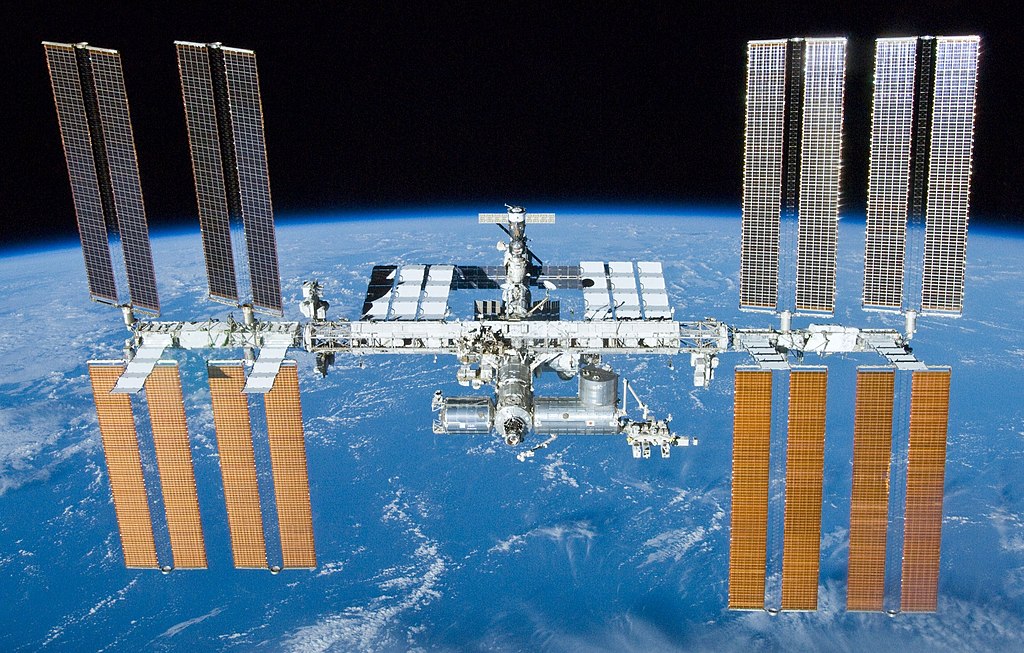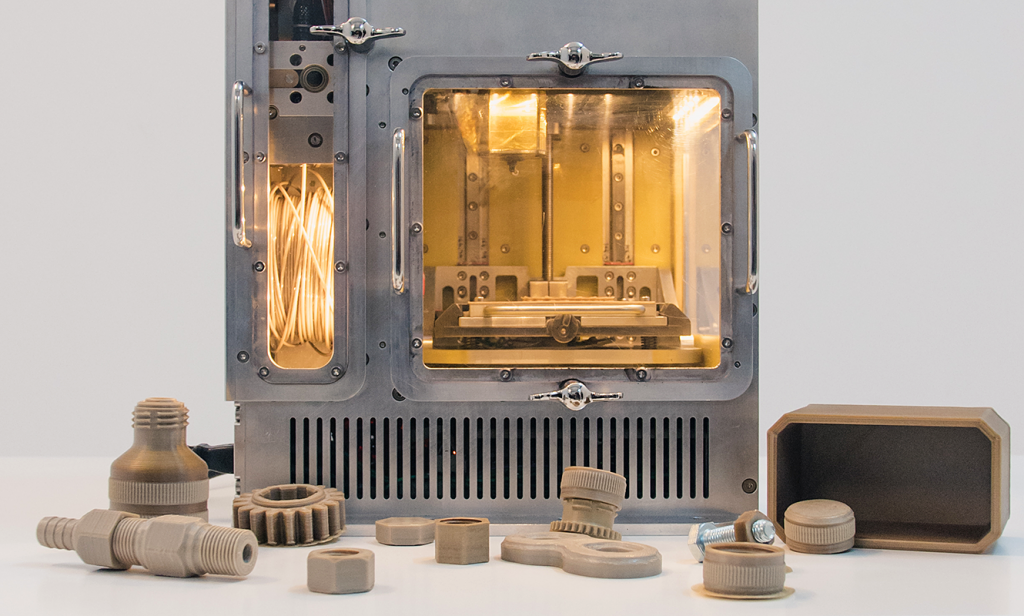A consortium operating under the European Space Agency (ESA) has designed and manufactured an early-stage FFF 3D printer to be used on the International Space Station (ISS).
Developed as part of Project IMPERIAL, the prototype system utilizes a conveyor belt assembly to 3D print parts of (theoretically) unlimited length. Compatible with a whole host of high-temperature engineering filaments, the unnamed 3D printer’s capabilities were demonstrated at the ESA’s Advanced Manufacturing workshop in early March, where attendees witnessed the fabrication of a 1.5m-long bar.
The project consortium comprises German aerospace firms OHB and Azimut Space, the Athlone Institute of Technology in the Republic of Ireland and Portuguese 3D printer provider BEEVERYCREATIVE.
“With this activity we have overcome one of the main limitations of 3D printing – the build volume – while using a compact 3D printer capable of processing high performance thermoplastics,” explains Ugo Lafont, a materials specialist at the ESA. “This is a great achievement that will extend the application field of this on-demand manufacturing process.”

What is Project IMPERIAL?
Following the success of the ESA’s preliminary Project MELT, which tested the feasibility of industrial FFF 3D printing in microgravity conditions, Project IMPERIAL was launched as a follow-on. Project IMPERIAL aims to take it a step further and develop an entire in-space manufacturing system that can overcome the size constraints of today’s 3D printers. As such, the system will eventually be used for on-demand fabrication and maintenance on board the ISS, facilitating self-sufficiency for future long-term space missions.
Advenit Makaya, an advanced manufacturing engineer at the ESA, states, “Developing out-of-Earth manufacturing solutions for large parts in a human exploration context such as here, and later on for spacecraft structural parts, will be essential in enhancing the sustainability and robustness of future space missions.”

Industrial-grade FFF 3D printing in space
The printer itself must adhere to a number of stringent technical requirements. This includes being able to print high-performance engineering polymers like PEEK, being able to print under microgravity conditions while maintaining Earth-like part qualities, and being able to print large parts with unlimited lengths in one direction. The power consumption of the system is also under strict limits, and functional printed parts must be ready to use straight out of the build chamber due to a lack of post-processing facilities in space.
To ensure successful integration onto the ISS, the team was also forced to design the 3D printer with raw material availability in mind. Any waste materials remaining after part production should at the very least be minimized, and entirely reusable if possible.
Antonella Sgambati, Project Manager at OHB, adds, “FFF with high-performance polymers has been already demonstrated to be unimpacted by a reduced gravity environment, paving the way for new challenges such as the possibility to print unlimited lengths in one direction or exploit batch production. In the frame of the project, new technological gaps have been identified and covered by prototype development and testing at BEEVERYCREATIVE, which led to this unique achievement, bringing out-of-Earth manufacturing one step closer.”

With the prospect of interplanetary space flight edging ever closer to reality, in-space additive manufacturing has become a hot topic in the aerospace sector. Earlier this year, engineering firm COSM Advanced Manufacturing Systems began working on the final development and build of a metal EBM 3D printer for NASA. Designed to support NASA’s needs for in-space automated manufacturing and component repair, the system is set to be used for a whole host of space, lunar, and martian missions, beginning with the Artemis program.
Elsewhere, researchers from the Technical University of Braunschweig and Laser Zentrum Hannover (LZH) recently 3D printed lunar regolith under zero gravity for the first time. During their experimental ‘MOONRISE’ project, the team mounted a customized laser to their ‘MIRA3D’ lunar rover and melted moondust into spherical shapes, paving the way for the fabrication of economical structures on the moon.
Subscribe to the 3D Printing Industry newsletter for the latest news in additive manufacturing. You can also stay connected by following us on Twitter and liking us on Facebook.
Looking for a career in additive manufacturing? Visit 3D Printing Jobs for a selection of roles in the industry.
Featured image shows the International Space Station. Photo via NASA.



